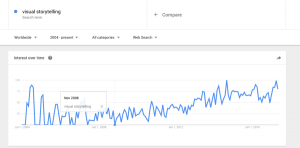— June 21, 2017
Managing influencer compensation for your next campaign

Determining influencer compensation can be tricky for even the savviest influencer marketing experts. The discovery process, finding the right influencers for your campaign, is hard enough. But once you’ve identified a good fit, you need to figure out how much to pay them. Some marketers will look for a quick-hit solution to influencer discovery by leaning on influencer marketplaces where the influencers are fast to find and seemingly very affordable. However, this tactic can deliver a serious hit to the authenticity of your promotion.
As the marketer representing your business, you need to be aware of your budget for the campaign and keep the compensation within those margins. But as a marketer partnering with human content creators, you want to make sure the influencer feels valued enough that they share their best work.
So how do you balance these two factors?
There is no silver bullet when it comes to compensation. There is no magic formula to determine an influencers’ value. In fact, there aren’t even industry standards for influencer rates. Each influencer is unique in the content they create and unique in the compensation they require.
So in order to achieve that necessary balance and build an effective influencer marketing program, it is important to develop a full understanding of who the influencer is and “who” your brand is. Figure out what makes the influencer unique and how they can add value to your brand. The convergence of those factors will help you understand how much you should pay influencers for your next campaign.
Know who you’re working with
There are many factors to take into account when you’re determining which influencers to work with on your campaign. You’ll determine the value of an influencer on metrics such as audience size, engagement rate, and content style. Let’s dig in on a few of the most important factors:
Audience size
Reach (the number of followers an influencer has on a given channel) is the easiest and most apparent audience metric. However, you cannot reliably determine compensation (or value) based on reach alone. An influencer with 30,000 followers may charge more than an influencer with 1 million followers. In general, larger following will require higher compensation.
Audience engagement
Next, you should think about engagement, influencers whose photos spark lively conversations that may help reveal brand sentiment or other learnings for your products will be more expensive than influencers who simply post a photo and get little interaction. But remember, not all engagement is equal.
Niche or Rarity
Audience niche is another way of thinking about and categorizing an influencer’s value through the lens of their audience. When you set out to recruit the influencer, you were most likely convinced that their content and audience matched with your brand’s target consumer. If you have a niche audience target– rock climbers, say– then you can be confident that a rock climbing Instagrammer will be driving engagement with your target consumer. A very niche creator might be more expensive because they have fewer competitors and are frequently contacted by brands.
Overall Quality
The final factor you should take into account is quality. Will this influencer create a unique and appealing photo or video for your brand? Will they take time creating the content, dreaming up interesting ways to incorporate your products into their life? Some influencers even have to pay professional photographers to shoot their content, so that cost per photo may get passed on to you. Higher quality content will cost you more than a haphazard selfie with your bottle of juice, a piece of candy, or tube of lipstick.
Know yourself
When you’re pitching an influencer and offering them a compensation rate, it can be easy to forget that they are evaluating you too. There are some things about your own brand that you should take into account when approaching an influencer.
Brand offering
When you come knocking on an influencer’s door, the first question they’ll want to know is “who’s asking?” Having lots of name recognition is usually helpful for a brand. Influencers want to build up a list of great brands they collaborate with– a resume of sorts. This can help legitimize the influencer’s presence in the world of advertising. Your brand’s street cred plays a big part in the determination of compensation, but it’s not the only factor.
An influencer may want to work with a big brand for the resume boost and so will settle for a smaller compensation because of the value they derive from the partnership. Conversely, large brands can be a turnoff for influencers who are cautious about branded content in their feeds– big brands are recognizable and may come across as inauthentic so they may charge more per post. The ultimate factor is lifestyle match. If the influencer is a perfect lifestyle match for your brand, they will probably be excited about the partnership and willing to negotiate. Your job is to convey the brand values, goals of the campaign, and the reason that you think each influencer will be a good fit.
Brand ask
Your most important job is to be very clear about what content you are asking for. The more you have outlined up front, the more likely it is that influencers will want to participate and the content you get will be higher quality. An ideal way to conduct an influencer campaign is to set up the expectations up front, give lots of resources and examples and let your influencers post freely. The more you dictate content, the more expensive it will be to have influencers agree to post. Additionally, dictated or heavily controlled content is more likely to garner negative engagement and be quickly deleted from the influencer’s feed because it is not authentic to their style.
Timing
Another consideration is timing. How many posts are you looking for? Some big name influencers won’t do single branded posts in their feed– they only engage brands for longer term projects. Some influencers are just the opposite and will never post more than twice about a brand. The number of posts you’re soliciting from influencers will affect the price as will the timing. A post around Christmas is going to cost more than a post in the middle of January because there is tons of brand competition during the holidays.
Content rights
The main question you should ask yourself to determine the content rights exchange is “what am I going to do with the content created during this campaign?” Some campaigns are only looking for reach and engagement, the posts go live on influencer feeds and that’s the end of it. However, many brands are looking to repurpose influencer content for their own social media feeds and even paid advertising campaigns. If you plan to repurpose content from influencers, you’re usually going to have to pay more for that content and negotiate the content rights and usage up front. Influencers almost never transfer copyright for their work over to brands. However, most influencers are happy to make usage deals so that you can use the amazing content to promote your brand in other ways.
Exclusivity
If you’re looking for exclusivity with an influencer, meaning that they agree not to post about your competitors within a designated time period, you’re gonna have to pay up. It is very reasonable to expect exclusivity within a photo (i.e. no other brands are promoted within the photo or caption promoting your brand) and we typically advise influencers to grant exclusivity during the 24 hour period of a post… but any exclusivity beyond that can become expensive because you are paying for the potential loss of other brand deals that come up.
Brand management
Lastly, you’ll want to make sure that your campaign management is up to snuff. If influencers feel that you’re not taking care of them or paying attention to the finer points of the campaign, they may require a large compensation rate or may decline the program altogether. As Carly Mask stated, “when communication breaks down or there is no follow through, like when you’re sending product out to an influencer and you’re hoping for beautiful content but you’re not giving them much direction or you’re not following through or holding them accountable or setting those expectations. Then you’re probably not going to see the results that you’re hoping for. So it’s super key to make sure you have that follow through and that the love and attention is in those details”. So make sure you’re on top of your game when it comes to influencer on-boarding, communication, and campaign management.
When you have a full understanding of the influencer and what your brand can offer that influencer, you can gain a better picture of how much to be paying that influencer.
You’re at the end of this post now and you’ll notice there’s no “influencer compensation calculator”… That’s because it doesn’t exist. And it shouldn’t exist. Influencer marketing is a little bit science, a little bit intuition. When you’re sourcing influencers, you’re recruiting artists to interpret your brand, which is a beautiful thing.
Business & Finance Articles on Business 2 Community
(116)



